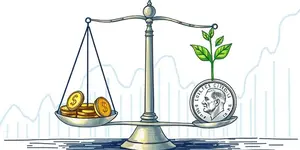
As global challenges intensify, investors are increasingly seeking ways to align profits with purpose. This comprehensive guide explores how to evaluate and select ESG opportunities that generate both financial returns and social good.
Conscious investing integrates traditional financial analysis with ethical, environmental, and social criteria. It goes beyond mere profit-seeking to encompass broader impacts on communities and ecosystems.
The primary aim of this approach is to achieve long-term investor value and positive impact. By considering non-financial indicators alongside earnings, investors can better anticipate risks and opportunities associated with sustainability trends.
ESG investing, a subset of conscious investing, specifically focuses on three pillars—Environmental, Social, and Governance—to assess corporate responsibility and future resilience.
Conscious investing has become a vital strategy for addressing pressing issues such as climate change, social inequality, and corporate ethics. By directing capital toward responsible companies, investors can support solutions at scale.
This movement aligns closely with the United Nations Sustainable Development Goals, offering a blueprint for investors to contribute directly to global targets like clean energy transition, gender equality, and poverty reduction.
Investors use established frameworks to evaluate companies in three core areas. A clear understanding of each pillar helps in selecting robust ESG opportunities.
For example, a company that pioneers renewable power generation while maintaining equitable labor practices and transparent reporting will rank highly across all three ESG dimensions.
The global market for ESG assets reached approximately $3.16 trillion by March 2025, even after recording substantial outflows in the first quarter of the year. U.S.-based ESG mutual funds and ETFs alone account for over $570 billion in assets under management.
Key growth drivers include the anticipated intergenerational wealth transfer shaping demand, with $83 trillion projected to move to younger generations over the next two decades. These inheritors tend to prefer impact-aligned investments, further bolstering ESG markets.
Investor sentiment remains robust: 87% of global asset managers believe their ESG objectives are unchanged, and 84% expect sustainability to accelerate by 2030.
Data shows that sustainable funds have competitive returns over conventional funds in recent years. A hypothetical $100 invested in a leading sustainable fund in 2018 would have grown to $136 by early 2025, compared to $131 in a traditional counterpart.
Moreover, integrating ESG into risk management helps companies anticipate regulatory, reputational, and operational risks. More than half of major corporations now include ESG factors in their enterprise risk inventories, enhancing resilience and long-term stability.
Investors choose ESG strategies for a variety of interconnected reasons:
Despite strong momentum, the ESG market faces several headwinds. In Q1 2025, sustainable funds experienced $8.6 billion in outflows, largely due to geopolitical tensions, shifting policies, and underperformance in certain green energy sectors.
Another significant concern is avoid false ESG claims and greenwashing. Without rigorous standards and transparent disclosures, investors may inadvertently support companies with superficial sustainability credentials.
Accurate impact measurement is crucial for accountability. Investors should seek funds and companies that adopt detailed impact measurement and accountability frameworks, including third-party verifications and standardized reporting protocols.
Key considerations include the use of recognized ESG ratings agencies, alignment with the Task Force on Climate-related Financial Disclosures (TCFD), and transparent sustainability reports.
Institutional investors and corporate leaders overwhelmingly expect ESG integration to deepen. As regulatory clarity improves—particularly in the EU and North America—ESG practices are set to become more sophisticated and embedded in mainstream finance.
The anticipated intergenerational wealth transfer shaping demand underscores the long-term potential for ESG markets. Younger investors prioritize impact, driving innovation in themed funds, green bonds, and social impact instruments.
To navigate the evolving ESG landscape, consider the following approaches:
By adopting these strategies, investors can build a robust portfolio that delivers both attractive returns and meaningful social outcomes.
Conscious investing is not merely a trend but a transformative approach that redefines the role of capital in society. As the ESG ecosystem matures, the opportunity to shape a sustainable future through prudent investment choices has never been greater.
References













